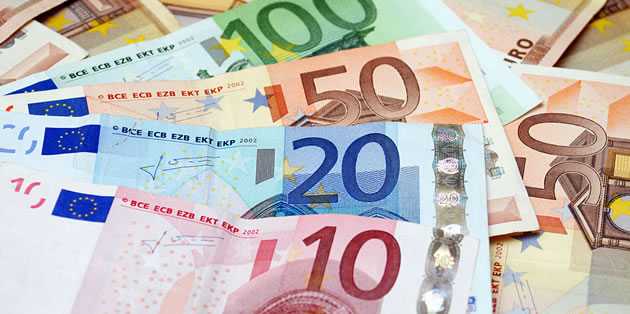- Future of Greek bailout remained in focus – IMF participation still in doubt over debt relief concerns
- Pound Sterling rallied on improved consumer confidence – Impact of poor GDP data failed to keep EUR/GBP exchange rate on uptrend
- Speculation continued over odds of June Fed hike – Stronger US data encouraged ‘Greenback’ strength
- Upward revision forecast for first quarter US GDP – Euro predicted to weaken in response to bullish US Dollar
Risk Appetite and Greek Concerns Continued to Weigh on Euro (EUR) Exchange Rate
With fairly limited Eurozone ecostats released in the latter half of the week the Euro (EUR) has been largely at the mercy of wider market trends. The appeal of the safe-haven currency was muted by a strong rebound in the price of oil, with Brent crude breaking back above $50 per barrel for the first time since November 2015. Italian Retail Sales proved weaker-than-expected on Thursday, adding downside pressure to the single currency as consumer demand contracted by -0.6% on the month in March. Continuing signs of slowdown across the Eurozone have undermined general confidence in the Euro, also seeming to raise the odds of the European Central Bank (ECB) being prompted to ease monetary policy future in the near future.
Worries over the future of Greece have remained a negative influence on the common currency, meanwhile, thanks to a renewed display of reticence from the International Monetary Fund (IMF). With the Fund still seemingly reluctant to commit to remaining in the Greek bailout while questions of debt relief remain up in the air, it seems as if the crisis could still flare up anew sooner rather than later.
Pound Sterling (GBP) Weakened by Discouraging UK GDP Report
The bullish run of the Pound (GBP) was halted on Thursday by the second estimate of the UK’s first quarter GDP, which proved disappointing. Growth on the year was revised lower from 2.1% to 2.0% – a greater slowing than previously thought. There was little to encourage confidence in the UK economy, as exports contracted and business investment fell for the first time in three years. Investors have increasingly expressed worries that the slowdown in economic growth could be due to more than just referendum-based uncertainty, suggesting that conditions are unlikely to see a significant rebound in the latter quarters of the year even in the event of a vote to remain in the EU.
However, in spite of this discouraging showing, Pound Sterling was not kept on a weaker footing for long. May’s GfK Consumer Confidence Survey surprised investors with an improvement from -3 to -1, seeming to indicate that domestic sentiment is picking back up even as the referendum approaches. Consequently, with markets still pricing in a lower risk of ‘Brexit’, this saw the Euro to Pound Sterling (EUR/GBP) exchange rate return to a downtrend.
Stronger US GDP Forecast to Boost US Dollar (USD) with Improved Odds of Fed Rate Hike
US Durable Goods Orders in April strongly bettered expectations to expand by 3.4% rather than the forecast 0.5%. While risk appetite had weighed heavily on the US Dollar (USD), alongside increasing doubts that the Fed will act to tighten monetary policy imminently, this stronger showing prompted higher demand for the currency. The latest Pending Home Sales figure also offered cause for optimism, clocking in at an increase of 2.9% as opposed to 0.2%. Altogether this data seemed to point towards greater levels of strength within the world’s largest economy, bolstering the case for an interest rate hike in June or July. Derek Halpenny of MUFG also noted:
‘In fact, given Brexit concerns are a main reason for delaying beyond June, the continued conviction in the markets that the vote will be to stay is strengthening the case for June. That is certainly still not priced – the June federal funds rate has about a 16% probability of a rate hike at the meeting on 15th June.’
Further support for the ‘Greenback’ is expected ahead of the weekend, with the second estimate of first quarter US GDP and commentary from Fed Chair Janet Yellen in focus. Markets anticipate an upward revision of annualised growth from 0.4% to 0.9%, which is likely to encourage a higher pricing for the possibility of a June rate hike. Any signs of increased hawkishness from Yellen would also be expected to prompt investors to continue favouring the US Dollar, to the detriment of the Euro.
Current EUR, GBP, USD Exchange Rates
At the time of writing, the Euro to Pound Sterling (EUR/GBP) exchange rate was trending lower around 0.7625, while the Euro to US Dollar (EUR/USD) pairing was slumped in the region of 1.1181. Meanwhile, the Pound Sterling to US Dollar (GBP/USD) exchange rate was trending narrowly at 1.4663.



